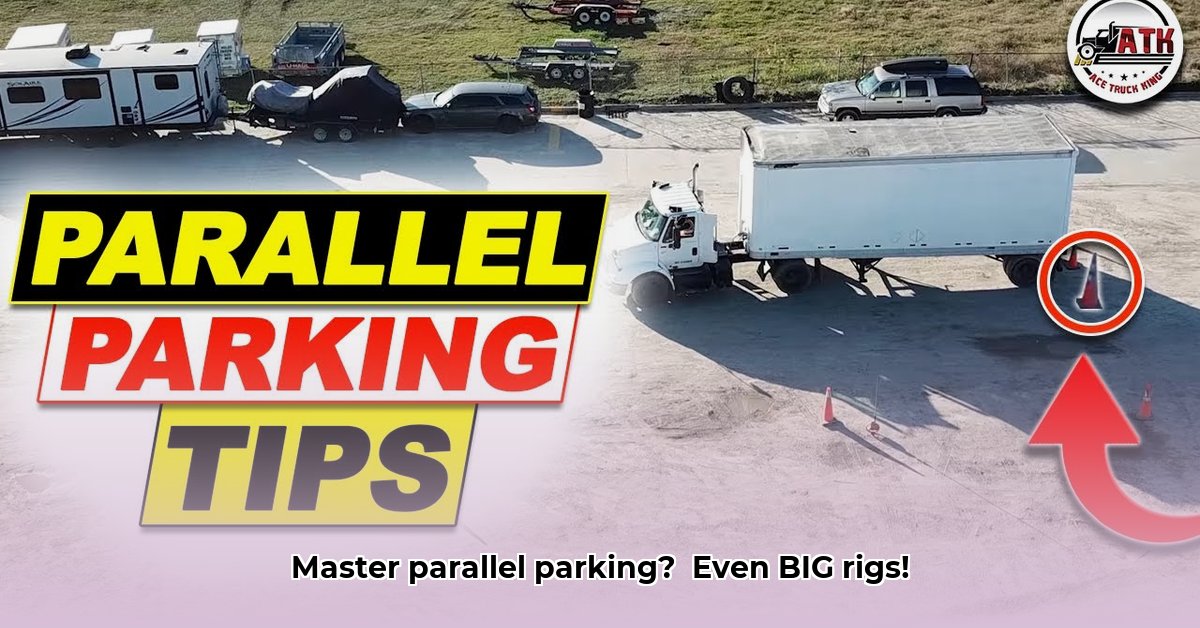
Parallel parking a tractor-trailer is a challenging yet crucial skill for professional drivers. Mastering this technique significantly enhances safety and efficiency on the road. This guide provides two methods, accompanied by troubleshooting tips and practice recommendations, to help you confidently navigate tight parking situations. Learn more about different trailer types at different trailer types.
Getting Ready to Park
Before attempting to parallel park, thorough preparation is vital. First, assess the parking space. You'll need significantly more room than a car—estimate at least one and a half to two times the combined length of your truck and trailer. Ensure the area is level and free of obstacles. Next, meticulously adjust your mirrors to maximize visibility. Understanding your vehicle's exact dimensions is critical for accurate maneuvering. Finally, take a moment to assess the surrounding environment, identifying potential hazards or obstructions.
Method 1: The Gradual Approach
This method emphasizes slow, controlled movements, ideal for beginners.
Initial Positioning: Position your truck alongside the empty space, leaving ample room between your truck and the vehicle in front. Aim to start slightly left of your desired final position.
Controlled Reverse: Begin backing slowly, gently turning your steering wheel slightly to the left. Constantly monitor your mirrors, focusing on the trailer's position relative to the vehicle and curb. Maintain a steady, slow speed.
Straightening: Once your trailer's front aligns with the back of the parked vehicle, straighten your steering wheel. Continue backing slowly, maintaining alignment.
Final Adjustments: Use small, incremental left turns of the steering wheel to guide your trailer toward the curb. Continue monitoring mirrors for precise alignment.
Completion: Once perfectly aligned, stop. You've successfully parallel parked using the gradual method.
Method 2: The Sharp Turn Approach
This method involves a more decisive initial maneuver, resulting in quicker parking but requiring more precision.
Starting Position: Position your truck similarly to Method 1, but allow slightly more initial space.
Decisive Turn: Begin reversing, and at the appropriate moment (this comes with practice!), make a sharp left turn of the steering wheel. This will initiate a more significant trailer swing.
Straighten and Reverse: As soon as your trailer begins to align with the space, straighten your steering wheel. Continue backing slowly, maintaining alignment.
Minor Corrections: Make minor steering adjustments to fine-tune your position. Observe your mirrors for precise alignment and make small corrections.
Final Stop: Once your truck is perfectly aligned, stop. You have successfully parked using the sharp turn method.
Troubleshooting Common Issues
Even with practice, challenges can arise. Here's how to address common problems:
- Insufficient Space: If you misjudge the space, gently pull forward and reassess. Choose a larger parking spot or utilize a different parking technique.
- Poor Visibility: Adjust mirrors for optimal visibility. Consider using a spotter, especially in challenging conditions or tight spaces. A spotter's guidance can be invaluable.
- Jackknifing: Slow down, use wider turns, and avoid sharp movements. Frequent mirror checks are crucial to prevent jackknifing.
Practice and Refinement
Consistent practice is paramount to mastering parallel parking. Find a safe, open area—ideally an empty parking lot—to practice both methods. Start slowly, gradually increasing your speed as confidence grows. Focus on smooth, controlled movements and precise mirror usage.
"Regular practice is key to building muscle memory and improving your skill. The more you practice, the more intuitive these maneuvers will become," says Sarah Miller, a veteran trucking instructor at the National Trucking Academy.
Conclusion
Parallel parking a tractor-trailer is a learnable skill. By understanding these two methods, practicing regularly, and addressing potential challenges proactively, you can become proficient and confident in navigating even the tightest parking spaces. Remember, patience and consistent practice are the cornerstones of success.